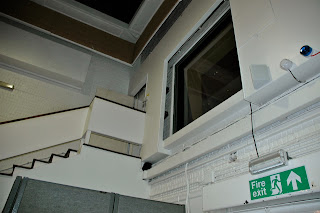I visited Abbey Road Studios recently for a presentation on the studios' history to celebrate their 80th anniversary.
The presentation took place in Studio 2 and was delivered to us by Kevin Ryan and Brian Kehew. Kevin and Brian are the authors of the critically acclaimed 'Recording The Beatles'. I haven't read it yet, but I've heard that it's excellent and oozes detail (Mark Lewisohn has given it his seal of approval by doing the foreword, so it
must be good). Gonna have to put it on my wish list. The presentation lasted for 90 minutes and covered the entire history of the studios, from the time it opened its doors in 1931 up until the present day. Kevin and Brian did a cracking job - there was loads of detail in there and most importantly there was plenty of Beatles content in there.
Lots of the instruments that the Beatles used in their recordings were on display, along with some vintage mixing desks and tape recorders that were used to create their masterpieces.
It was an awesome experience - the air was thick with the history and importance of what had happened there all those years ago.
A splendid time was guaranteed for (and had by) all.
The chairs that made up the majority of the seating for the presentation were the original chairs that were delivered to Abbey Road circa 1960. They were chosen because they didn't make any squeaking noises during recording sessions, unlike the old wooden ones that they had before.
The chairs were bright red leather numbers with grey metal legs. They can be seen in nearly every picture of the Beatles at Abbey Road and are still in use today. I bounced up and down on mine and I can confirm that they don't squeak at all, 50 years later. Wise investment, EMI.
Here are they are now:
And here they are 'in action' with you know who. Wonder if any of them ever sat on the chair I parked myself on?
Here's one of The Fool sitting on the chairs when they visited the Beatles at Abbey Road in 1967.
This is just a little taster of the delights that were on show inside Studio 2. Keep em peeled - I'll be adding more Abbey Road posts in the not-so-distant future.



































